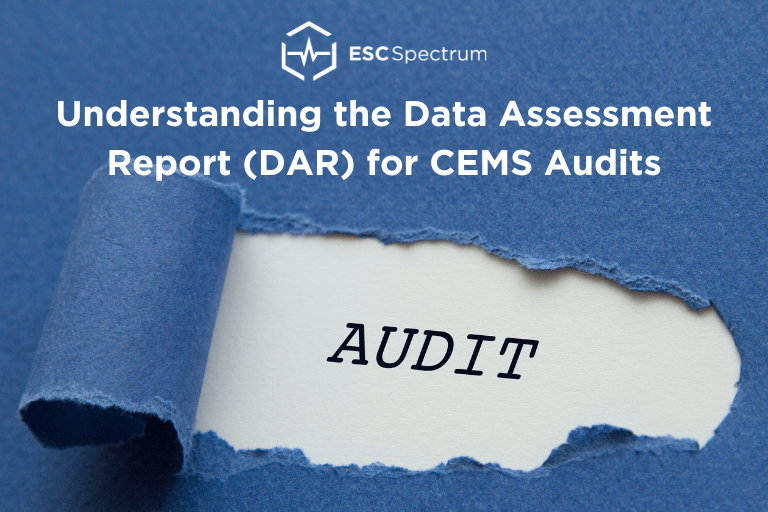Staying on top of reporting requirements can be a challenge, especially with various reports needed to maintain compliance. One critical report that often flies under the radar is the Data Assessment Report (DAR) for Continuous Emissions Monitoring Systems (CEMS) audits. Here’s what you need to know to keep your DAR in check and streamline your reporting process.
What is a Data Assessment Report (DAR)?
The DAR is a report that compiles essential data from CEMS audits. It summarizes accuracy results from quarterly audits and daily calibration drift assessments. DARs need to be submitted alongside the emissions report at the interval specified by applicable regulations. You can find more details on DAR reporting in Appendix F to Part 60, Procedure 1, Section 7—Reporting Requirements, which includes an example format.
What Needs to Be Included in a DAR?
To meet compliance standards, every DAR must include:
Source Owner/Operator Information
Name and address of the source owner or operator.
Monitor Details
Identification and location of monitors in the CEMS, along with the manufacturer and model number for each.
Quarterly Audit Results
Details of any RATA, RAA, or CGA performed during the quarter.
EPA Performance Audit Samples
Summary of results from EPA performance audit samples.
Corrective Actions
Documentation of all corrective actions taken when the CEMS was found to be out-of-control.
Key Requirements: EPA Performance Audit Samples
A unique requirement for DARs involves the analysis of “blind” EPA audit samples, which helps assess test data bias. According to 40 CFR 60.8(g) and 40 CFR 63.7(c)(2)(iii), these samples must come from an accredited audit sample provider (AASP) and must be commercially available—meaning two or more AASPs offer these samples. At the moment, only one AASP is available, so the audit sample requirement is not currently enforced. The EPA will provide a 60-day notice on its Air Emission Measurement Center website once a second AASP becomes available and the audits are required again.
Need Assistance with Your DAR?
Understanding and meeting your Data Assessment Reports (DAR) requirements can be complex, but our Regulatory and Reporting Team is here to help. Our experts monitor your data, remind you of due dates, and compile the necessary information to make your reporting process seamless.
Our powerful Data Acquisition System (DAS), StackVision, simplifies DAR management by automating data tracking and report generation, saving your time and ensuring compliance. With the right support, you can keep your sit compliant and focus on what matters most.
For a complete resource on emissions monitoring, explore our Comprehensive Emissions Monitoring Guide for Refining and Petrochemical Facilities, covering everything from best practices to regulatory compliance.

Jennifer Waltrip - Regulatory and Reporting Engineer III
Jennifer Waltrip has nearly 20 years of combined experience in environmental regulatory and permitting programs in water, wastewater, solid waste, and air. She has supervised state environmental permitting programs for air, solid waste, and wetlands. Jennifer also helped develop and provide OSHA training for regulatory agencies in Florida for 10 years. She has been with ESC Spectrum for two years and is currently a Regulatory and Reporting Engineer III on the Reporting Team.


